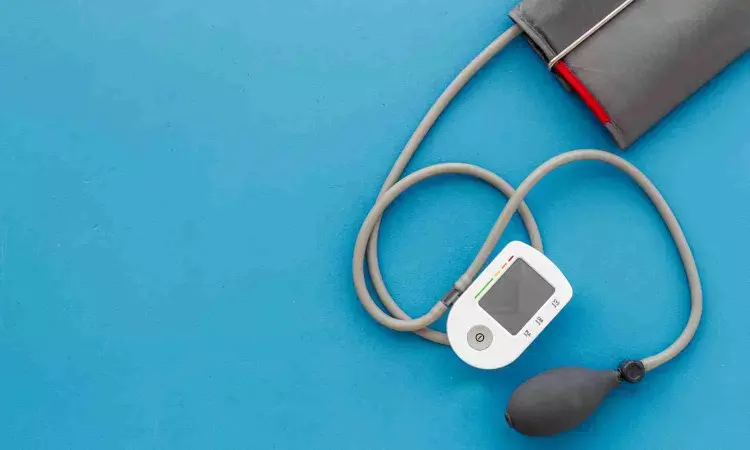- Home
- Medical news & Guidelines
- Anesthesiology
- Cardiology and CTVS
- Critical Care
- Dentistry
- Dermatology
- Diabetes and Endocrinology
- ENT
- Gastroenterology
- Medicine
- Nephrology
- Neurology
- Obstretics-Gynaecology
- Oncology
- Ophthalmology
- Orthopaedics
- Pediatrics-Neonatology
- Psychiatry
- Pulmonology
- Radiology
- Surgery
- Urology
- Laboratory Medicine
- Diet
- Nursing
- Paramedical
- Physiotherapy
- Health news
- Fact Check
- Bone Health Fact Check
- Brain Health Fact Check
- Cancer Related Fact Check
- Child Care Fact Check
- Dental and oral health fact check
- Diabetes and metabolic health fact check
- Diet and Nutrition Fact Check
- Eye and ENT Care Fact Check
- Fitness fact check
- Gut health fact check
- Heart health fact check
- Kidney health fact check
- Medical education fact check
- Men's health fact check
- Respiratory fact check
- Skin and hair care fact check
- Vaccine and Immunization fact check
- Women's health fact check
- AYUSH
- State News
- Andaman and Nicobar Islands
- Andhra Pradesh
- Arunachal Pradesh
- Assam
- Bihar
- Chandigarh
- Chattisgarh
- Dadra and Nagar Haveli
- Daman and Diu
- Delhi
- Goa
- Gujarat
- Haryana
- Himachal Pradesh
- Jammu & Kashmir
- Jharkhand
- Karnataka
- Kerala
- Ladakh
- Lakshadweep
- Madhya Pradesh
- Maharashtra
- Manipur
- Meghalaya
- Mizoram
- Nagaland
- Odisha
- Puducherry
- Punjab
- Rajasthan
- Sikkim
- Tamil Nadu
- Telangana
- Tripura
- Uttar Pradesh
- Uttrakhand
- West Bengal
- Medical Education
- Industry
Conical Cuffs Show No Advantage Over Cylindrical Cuffs for BP Measurement in Obese Children: Study

Researchers have found that conical cuffs used in BP measurement in obese children and adolescents do not offer any significant advantage over conventional cylindrical cuffs. A recent study of Valencia was published in the journal Blood Pressure by Evripidou and colleagues.
The main purpose was to compare the measurements of blood pressure at the office in obese children and adolescents using conical and cylindrical cuffs, and whether it is more precise with the use of conical cuffs.
This was an observational study that enrolled 37 children and adolescents with obesity from the Obesity and Cardiovascular Risk Unit at the General University Hospital Consortium of Valencia. Arm circumference (AC) of each subject was measured in order to get cuff size appropriate for both types of cuffs, conical and cylindrical, following measurement of blood pressure with both cuff sizes. Comparisons of results obtained from both cuff types were compared. The principal outcomes included systolic blood pressure (SBP), diastolic blood pressure (DBP), and z-scores.
• Mean age of the subjects was 11.8 ± 2.5 years.
• Mean BMI was 28.8 ± 3.4 kg/m², mean BMI z-score was 2.12 ± 0.32.
• Mean arm circumference was 30.0 ± 3.6 cm.
• Difference between measurement of BP on cylindrical and conical cuffs were not significantly different
• Mean difference for systolic BP between cylindrical and conical cuffs was -0.22 ± 6.55 mmHg.
• For the z-score of SBP, the difference was -0.02 ± 0.81 .
• The difference of DBP was -0.70 ± 4.95 mmHg.
• For the z-score of DBP, the difference was -0.06 ± 0.44.
• Although two cuff types, though showed no statistical differences, were positively related to each other in measurements and the mean and z-score SBP and DBP values were also significantly related to each other (p < 0.001).
• The Bland-Altman analysis confirmed good agreement between the two cuff types, 94.6% of all BP measurements falling within the acceptable limits of agreement.
Conical cuffs failed to offer benefit over cylindrical cuffs in reducing measurement bias in the measurement of blood pressure among the obese pediatric population. Although previous research in adults has indicated that the use of a conical cuff improves the reliability of measurements, there is consensus from studies among pediatric patients that the use of a conical cuff does not have benefits in terms of enhancing reliability of BP measurements. Even though conical cuffs can still be viewed as an alternative for office blood pressure measurement, more such studies involving larger populations and diverse clinical settings are required to ascertain their effectiveness within this group.
Reference:
Evripidou, K., Alvarez-Pitti, J., De Blas-Zapata, A., Chainoglou, A., Goulas, I., Herberigs, K., Hamdani, G., Stabouli, S., & HyperChildNET Working Group 1. (2024). Office BP measurement using conical cuffs in children and adolescents with obesity. Blood Pressure, 33(1). https://doi.org/10.1080/08037051.2024.2411294
Dr Riya Dave has completed dentistry from Gujarat University in 2022. She is a dentist and accomplished medical and scientific writer known for her commitment to bridging the gap between clinical expertise and accessible healthcare information. She has been actively involved in writing blogs related to health and wellness.
Dr Kamal Kant Kohli-MBBS, DTCD- a chest specialist with more than 30 years of practice and a flair for writing clinical articles, Dr Kamal Kant Kohli joined Medical Dialogues as a Chief Editor of Medical News. Besides writing articles, as an editor, he proofreads and verifies all the medical content published on Medical Dialogues including those coming from journals, studies,medical conferences,guidelines etc. Email: drkohli@medicaldialogues.in. Contact no. 011-43720751


